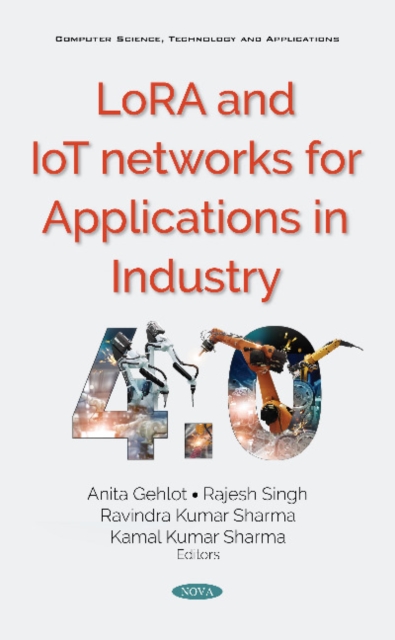
LoRA and IoT Networks for Applications in Industry 4.0 Hardback
by Ravindra Kumar Sharma
Hardback
Description
The concept of Industry 4.0 includes both Internet of Things (IoT) structure and the local networks which need to carry the real-time tasks.
The LoRa technology can be implemented for industrial wireless networks to control sensors and actuators of the Industry 4.0 era.
This book aims to explore the methods and systems to implement LoRa network for Industry 4.0.
The book comprises of ten chapters. Chapter 1 explains the monitoring of pipeline leaks, which play a prominent role in crude oil industry.
To achieve the best solution and more protection of the environment, possible combinations of various technologies are discussed.
Chapter 2 illustrates the low power wide area networks.
A survey of recent published articles has been included on Low Power Wide Area networks and their applications.
Chapter 3 discusses industrial hazards. It explores the various technical algorithms comprising of various equipments able to monitor environmental parameters by sensing through different pre-installed nodes deployed at specific positions.
Chapter 4 deals with smart agriculture with an emphasis on guaranteed nourishment, effects of environmental changes on agribusiness along with lighting and smart parking issues.
Chapter 5proposed an XBEee and IoT based architecture for the monitoring the garbage bins wirelessly.
Here the XBee based sensor, which is placed in the garbage bin, initiates the function of our architecture and sends the status of the garbage bin to the local sever.
Chapter 6 identifies various areas where fire safety technology upgradation is required.
The importance of wireless sensor networks as the one of the efficient methods for fire safety systems is also highlighted.
Chapter 7 reports a review of research work related to the RSSI.
RSSI is concluded as a very good indoor localization approach.
Chapter 8 explores the problem of measuring the depth and flow of water in large water body or water pipe.
A solution is proposed which will reduce the chance of human error and make pace for intelligent cities.
Chapter 9 discusses the cyber security in manufacturing and related industries.
It explores the nature of the data, topologies of IoT devices, and complexities of threat management and ensuring compliance.
Chapter 10 addresses the importance of fire safety in smart city and building along with the role of IoT for meeting the requirement.
Editors are thankful to all the contributors and publisher for their support.
Information
-
Available to Order - This title is available to order, with delivery expected within 2 weeks
- Format:Hardback
- Pages:259 pages
- Publisher:Nova Science Publishers Inc
- Publication Date:01/04/2020
- Category:
- ISBN:9781536171648
Information
-
Available to Order - This title is available to order, with delivery expected within 2 weeks
- Format:Hardback
- Pages:259 pages
- Publisher:Nova Science Publishers Inc
- Publication Date:01/04/2020
- Category:
- ISBN:9781536171648






